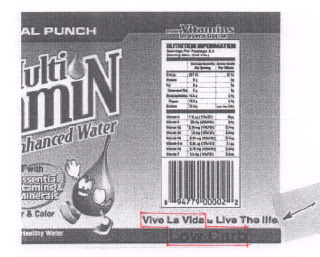No Second Bite of Pineapple: TTAB Denies Request for Reconsideration of "KAMEHAMA" 2(d) Decision
The Board refused to reconsider its March 9, 2007 decision (here) upholding a Section 2(d) refusal to register two KAMEHAMEHA SCHOOLS design marks (one variation shown immediately below) for clothing items. The Board found the marks to be confusingly similar to the registered mark KAMEHAMEHA for overlapping clothing items. In re Trustees of the Estate of Bernice Pauahi Bishop, Serial Nos. 76596501 and 76596503 (July 12, 2007) [not precedential].

The Board agreed with the PTO that the dominant portion of each of Applicant's marks is the term KAMEHAMEHA. It noted that words such as "school" and "alumni" commonly appear on clothing bearing school names, and thus consumers will consider such terms as merely informational and "will accord them lesser significance than KAMEHAMEHA as a source indicator."
Moreover, the Board found the term KAMEHAMEHA "to dominate over the design," since the word portion of a mark is normally accorded greater weight. The design portion, featuring a representation of King Kamehameha, "reinforces KAMEHAMEHA as the dominant term in the mark."

In requesting reconsideration, Applicant pointed to a recent Ninth Circuit decision that discusses the "historical and contemporary importance of Kamehameha Schools," and it contended that "those familiar with Hawaii will readily identify applicant's marks with the institution."
The Board considered this to be an attempt to offer new factual evidence, which is improper on a request for reconsideration. In any case, to the extent Applicant was asserting that, in light of the renown of the Kamehameha schools, consumers will believe registrant's goods to emanate from applicant, that was of no help. Such reverse confusion is also prohibited by Section 2(d).

And even if Applicant's argument is that confusion is not likely because it is so well known, that is not a basis to deny registration: "[t]rademark rights are neither acquired nor lost on the basis of comparative popularity."
The Board therefore denied the request for reconsideration.
TTABlog comment: I think the Board got this one wrong. The Kamehameha schools would obviously be seen as the source of the clothing bearing the applied-for marks. But is clothing bearing the mark KAMEHAMEHA, on the other hand, likely to be seen as emanating from the same source? Given the notoriety of King Kamehameha as an historical figure, why would the ordinary consumer believe that the schools are the likely source of that clothing? Although the schools might sometimes be referred to by the single term "Kamehameha" in certain contexts, does that mean consumers will likely be confused when they see the brand name KAMEHAMEHA on clothing? Will they automatically think of the schools? Or just of the historical figure? Where's the proof of consumer perception?
Text Copyright John L. Welch 2007.












































